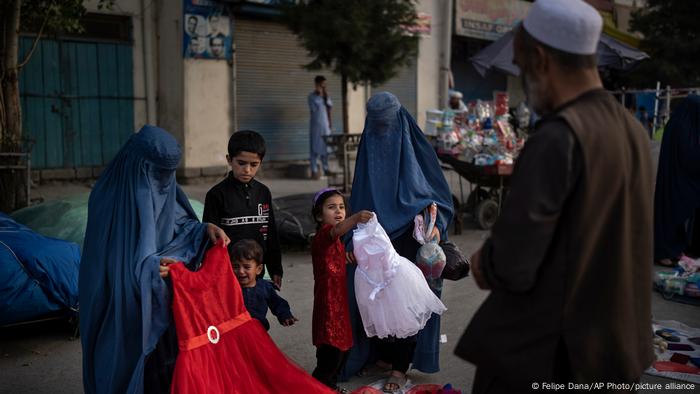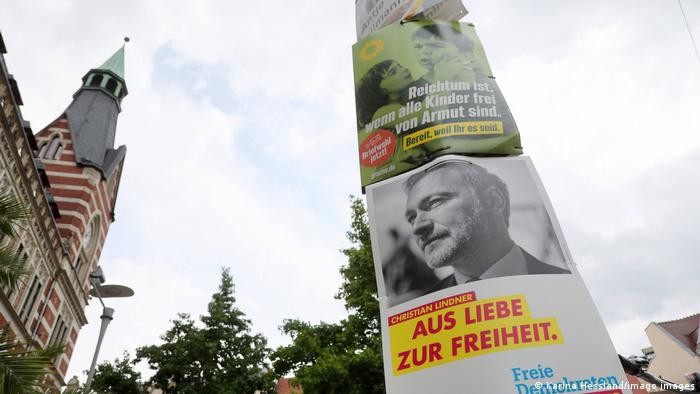Danish is transgender, Khalid is gay. But in Afghanistan under the Taliban rule, LGBTQ people face the death penalty. So their only option is to flee the country. Here's their story.
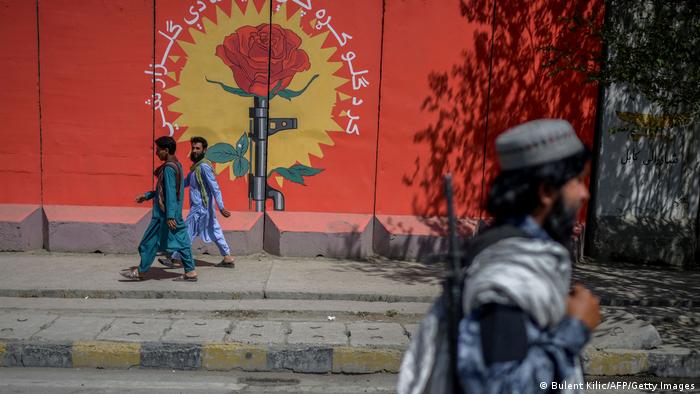
On August 15, the Taliban retook control of Afghanistan
Danish has been living in semidarkness for weeks. Since the Taliban's takeover in mid-August, he has been hiding in the windowless back room of a friend's now-closed shop in Kabul. He no longer dares go outside. Under the Islamist Taliban, he and many like him face the death penalty.
Assigned female at birth and raised as a girl, Danish has known since he was 13 that he was in the wrong body. A body that he "hates," he says. In the photos that he sends, he emphatically wears masculine clothing and a short haircut.
Now he just kills time, "just breathing in a room like a prison." At night he takes sleeping pills to calm his ruminations. "My mind is stuck. I am getting mad overthinking." Most of all, he writes, he would like to stand by the sea and just scream until his throat is sore.
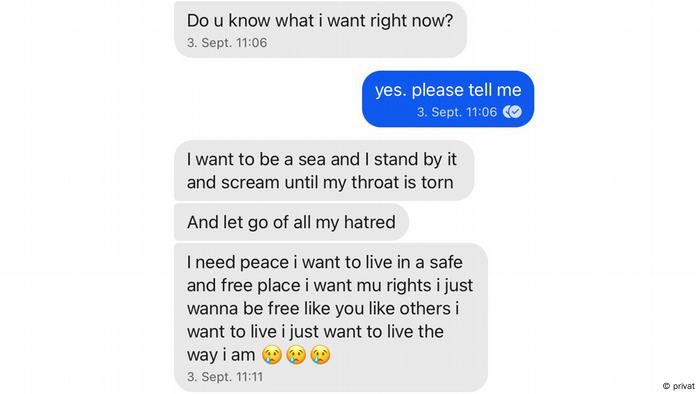
Danish only has contact with the outside world via his mobile phone — with very few people. His closest confidante is Khalid, a good friend who is gay and, like Danish, in his mid-20s. DW has been in daily contact with both of them via an encrypted message service since the beginning of September. Their names have been changed for safety reasons.
Attacked in the street
Khalid has taken precautions. As the Taliban advanced on Kabul, he swapped his jeans and a hooded jacket for traditional Afghan clothing. He even grew a beard — so as not to attract attention.
But he's really a feminine guy, he says. And he knows that this alone can be dangerous for him.

Khalid dares not venture outside, where Taliban fighters patrol the streets of Kabul
On August 15, the day the Islamists took Kabul, he left his room to run errands. He thought he was well prepared. But his precautionary measures were not enough.
In the middle of the street, he felt a sudden pain in his right shoulder. "Then there was this Talib. I did not see him. He had a plastic pipe which is used for water. It was really thick and heavy. He hit me on my right shoulder. It hurt a lot, my eyes were full of tears. Then he used some curse words in Pashto, basically, he said: 'Why are you walking so feminine, don't you know how to walk [properly]?'"
Khalid has stayed at home since then.
Brutal punishment under the Taliban
Under the Taliban, LGBTQ people like Khalid and Danish fear for their lives. For a man who has sex with another man there are only two possible punishments — and both are lethal, according to a Taliban judge who spoke with German tabloid newspaper Bild in an exclusive interview a few weeks before the takeover: "Either stoning or he has to be behind a wall that falls on him. The wall must be 2 1/2 to 3 meters [ca. 8 to 9 feet — Editor's note] high."
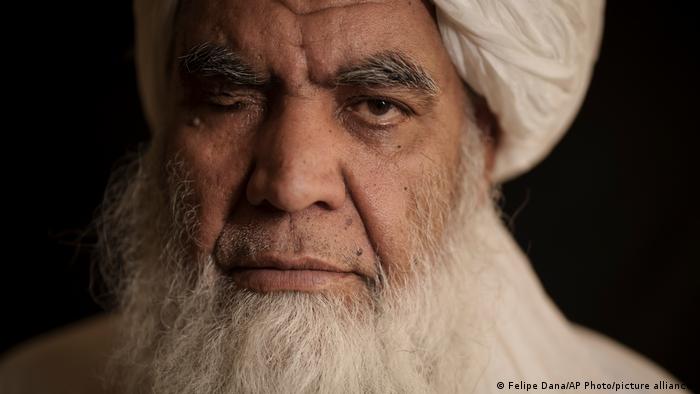
Mullah Nooruddin Turabi, one of the founders of the Taliban, wants to bring back executions and amputations
At the end of September, Mullah Nooruddin Turabi, a senior founding member of the Taliban, told The Associated Press news agency that the government would reintroduce executions and hand amputations, just like they did in the 1990s.
Back then, Turabi was the justice minister in the Taliban government. According to an Australian government report, homosexuals in Afghanistan were executed regularly between 1996 and the fall of the Taliban in autumn 2001.
Discrimination and violence
Under President Hamid Karzai and his successor, Ashraf Ghani, LGBTQ people were no longer threatened with the death penalty. However, according to Afghan criminal law, sexual relationships outside of marriage between a man and a woman were fundamentally prohibited and punishable.
In 2018, a new law criminalizing homosexuality was passed under Ghani. Thereafter, homosexual physical relationships were punishable by up to two years in prison.
Everyday discrimination against LGBTQ individuals is ubiquitous, as is violence against them. Both Danish and Khalid experienced this firsthand. Both were beaten mercilessly by their families and were outcasts because of their sexual orientation. Both have few people they trust.
Dating under a false name
There is no openly queer community in Kabul, explains Khalid in a telephone conversation over an encrypted messenger service. Everything takes place in secret for safety reasons, he says. Dating works mainly through a specific app. Everyone is there under a false name and with a fake photo, which can be that of a celebrity like Hollywood actor Tom Cruise.
Has he ever been in a relationship? Khalid starts laughing briefly at this question. No, he then says, so far only no-strings-attached acquaintances. "It is [a] no-commitment situation, we are really good friends, and we do stuff."
LIFE IN AFGHANISTAN UNDER THE TALIBANNew but old dress codeAlthough it is not yet mandatory for women to wear a burqa, many do so out of fear of reprisals. This Afghan woman is visiting a local market with her children. There is a large supply of second-hand clothes as many refugees have left their clothes behind.
Harassment in everyday life
Sideways glances, comments, insults: Khalid has experienced all these again and again on the streets of Kabul.
Khalid is educated and has a degree in economics, but he still can't find a job. He tells DW that he has been invited to numerous interviews. He had all the necessary qualifications, but that made no difference.
"They were asking me very personal questions and they were just making fun of me. They were not asking me any questions about what I do. They didn't want to hear that I am a Google certified data analyst," he says. Khalid believes his feminine appearance was the reason for the rejections.
Losing the will to live
In mid-September, Khalid became very worried about Danish. His friend's mental situation had seemed to deteriorate.
The loneliness, the darkness, the uncertainty and the constant fear of death got to him more and more. At this point in time, Danish had not seen anyone for 36 days, and had only eaten water and dry biscuits.
Watch video 01:35 Taliban impose beard-trimming ban
Danish sent DW photos of himself: Tattoos decorate his arms, hands and neck. About three years ago he got his first tattoo — an act which is something of a taboo in conservative Afghan society, he explains. And now strictly prohibited under the Taliban.
One of his tattoos shows the nickname of the woman he loves. He was in a secret relationship with her for two years; they were happy. Then her parents found out that their daughter was dating a trans man, and she was forcibly married off to someone else. He hasn't heard from her for a year.
In other photos, reddish-purple bruises and welts are clearly visible on the skin of his upper arms back and thighs, some up to 20 centimeters (8 inches) long. "That was my father," he says. He has not seen his family since the day he was beaten up.
A sudden ray of hope
Danish's tone is often desperate. He just wishes that everything were over, he writes. He has no more energy to be optimistic.
But then, at the end of September, things suddenly happened very quickly. Danish and Khalid made it onto evacuation lists of foreign NGOs that specifically look after LGBTQ people in need. On September 25, 41 days after the Taliban came to power, the two friends boarded a Pakistan International Airlines plane that took them to Islamabad.
"I literally feel like a bird whose wings are open and just need to fly," Khalid says in a voice message, describing his feelings at that moment.
Dreams of the future
In Pakistan, Danish and Khalid are now staying in safe houses until their documents have been checked and they can fill out their immigration applications for third countries.
Danish would like to go to the United States. His dream is to be a musician. "I want to be a rock star. I would love to have a rock concert in the middle of New York City one day and chat with the crowd and sing," he says.
Khalid would like to go to Canada. Gay acquaintances told him that the LGBTQ community there was treated with respect and that everyone could live in dignity.
Khalid has already fulfilled a small wish: he painted his fingernails in yellow, orange, pink and blue. Nail polish makes him happy. Now, after a long time, he dares to wear it again. When he saw the colorful bottles in a shop in Islamabad, he got them right away. "I could not stop myself when I saw those."
This article has been translated from German.
How violence and abuse drove a transgender migrant back to Pakistan
Romesa Ahmed, a transgender woman from Pakistan, tells the story of her failed attempt to flee to Europe. Shunned by her family, raped and tortured by those meant to help her, Romesa's journey shows the particular hardship suffered by transgender people.
Date 01.10.2021
Author Anooshay Abid, Afifa Nasrullah (Lahore)
